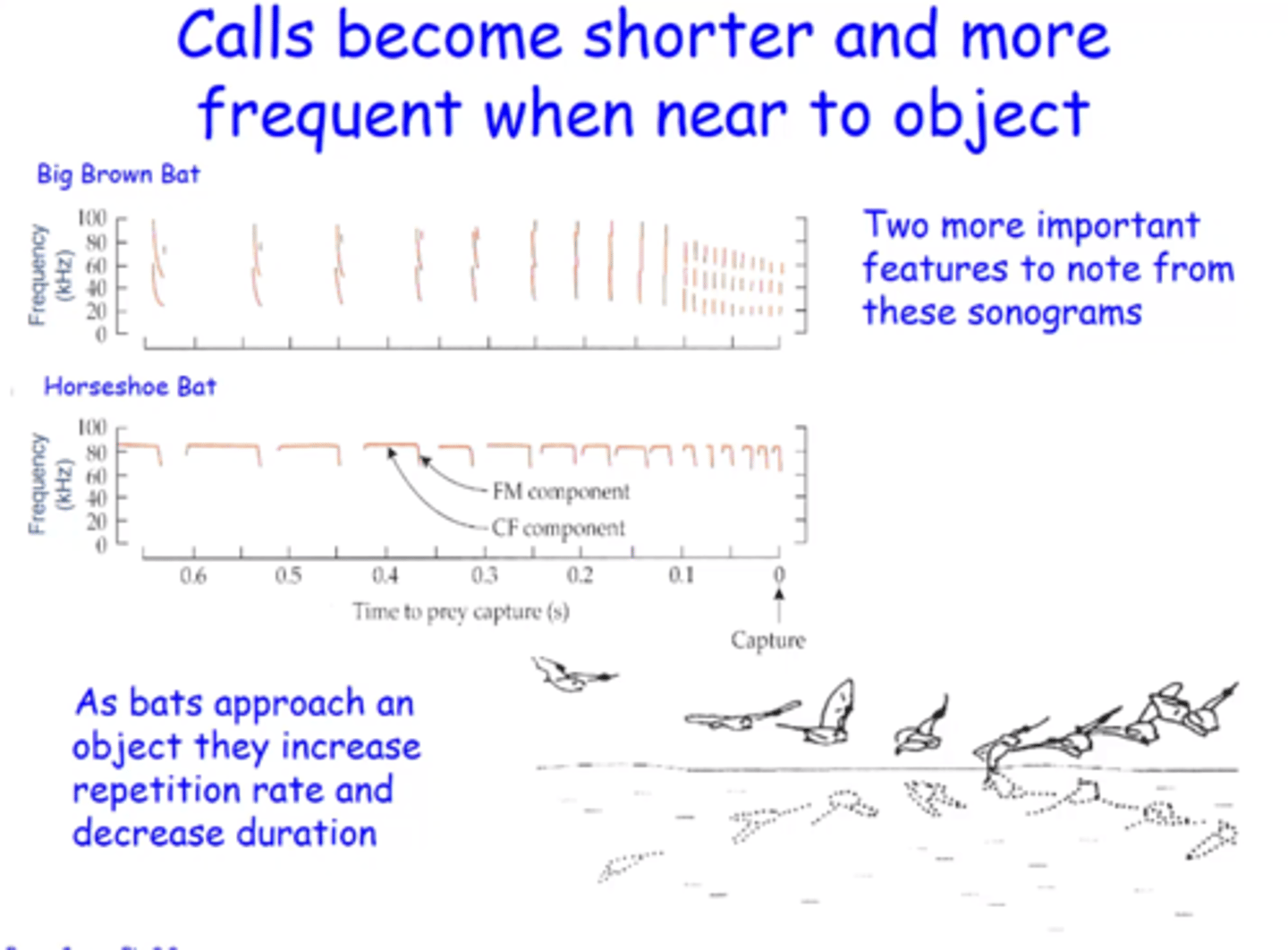BS2066 - Bat Echolocation
1/9
There's no tags or description
Looks like no tags are added yet.
Name | Mastery | Learn | Test | Matching | Spaced |
|---|
No study sessions yet.
10 Terms
Why do Bats use ultrasonic frequencies for echolocation?
If a wavelength of a sound is bigger than an object/gap it will not be reflected. Bats use echolocation to navigate around small obstacles such as branches, or to catch prey - e.g mosquitos - and thus need very high frequencies with which to detect these objects.
~see image~
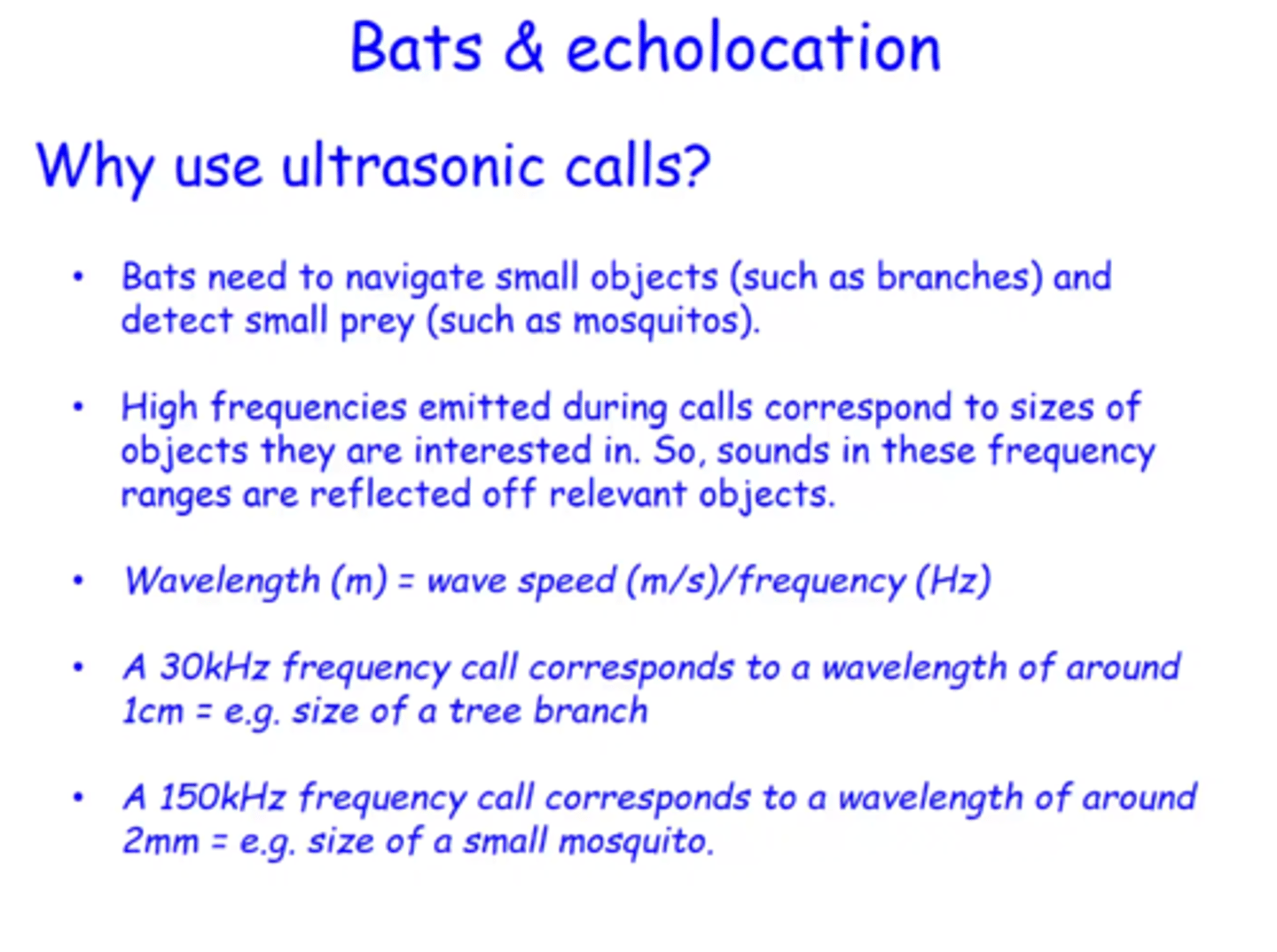
What information, and how, can bats gather from echolocation?
~see image~
Distance = time delay of echo
Angular size = amplitude of waveform
combine together to determine absolute size
e.g. A large object far away = large delay + small amplitude
a small object close = small delay + small amplitude
(amplitude decays with distance)
Direction: Elevation + Azimuth

What are the 2 types/general waveforms that Bats generate within echolocation?
~see image~
FM Calls - Frequency Modulated calls
CF - Constant frequency calls
Bats either use pure FM or a mixture of FM/CF calls
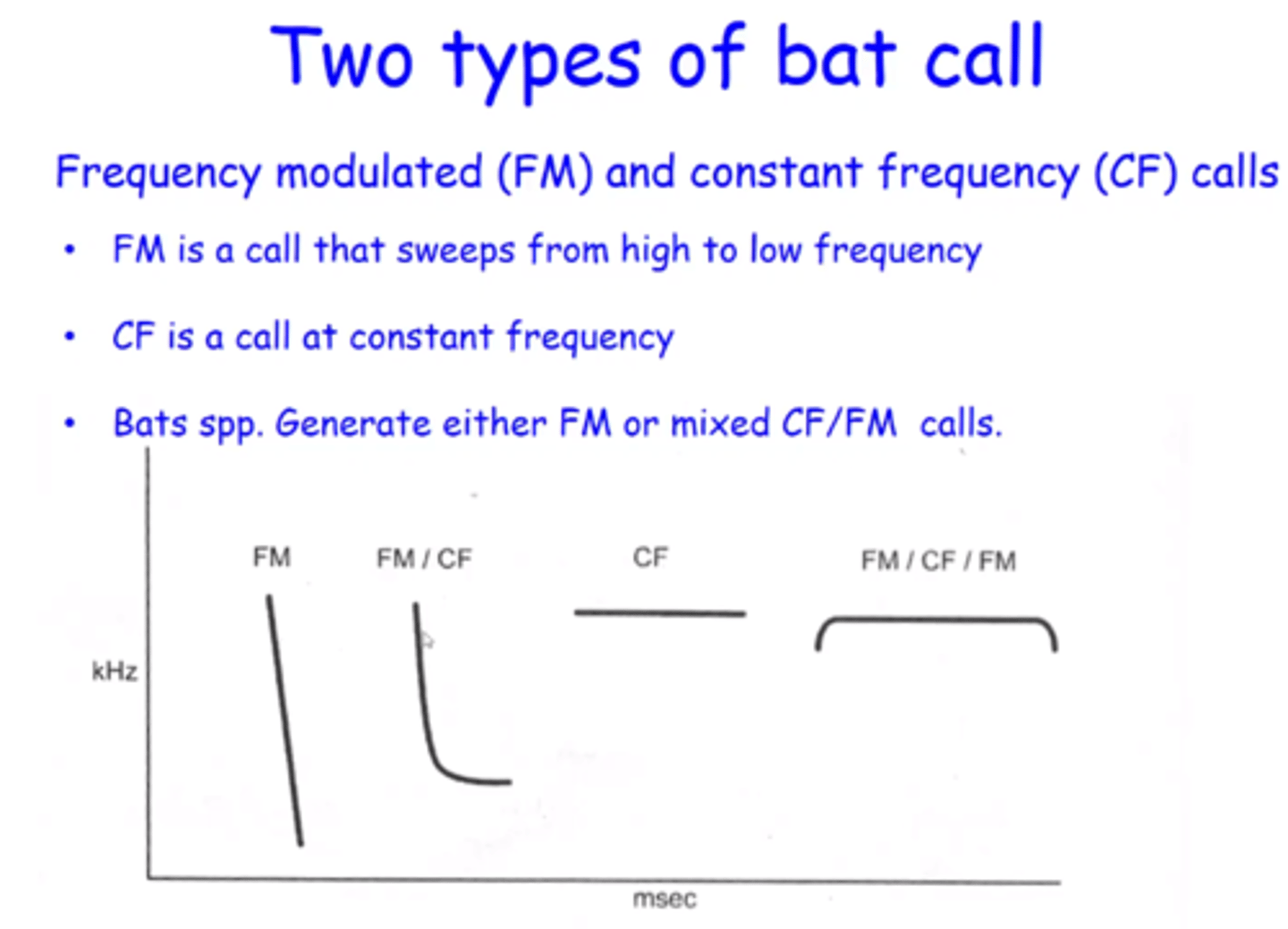
What are FM calls good for? What do they look like
Precise localisation of close objects
They are short (5ms) and usually sweep from higher to lower frequencies
- as FM calls sweep a range of frequencies they lose energy quickly - however the large range allows for analysis of multiple time delays returned from a single call
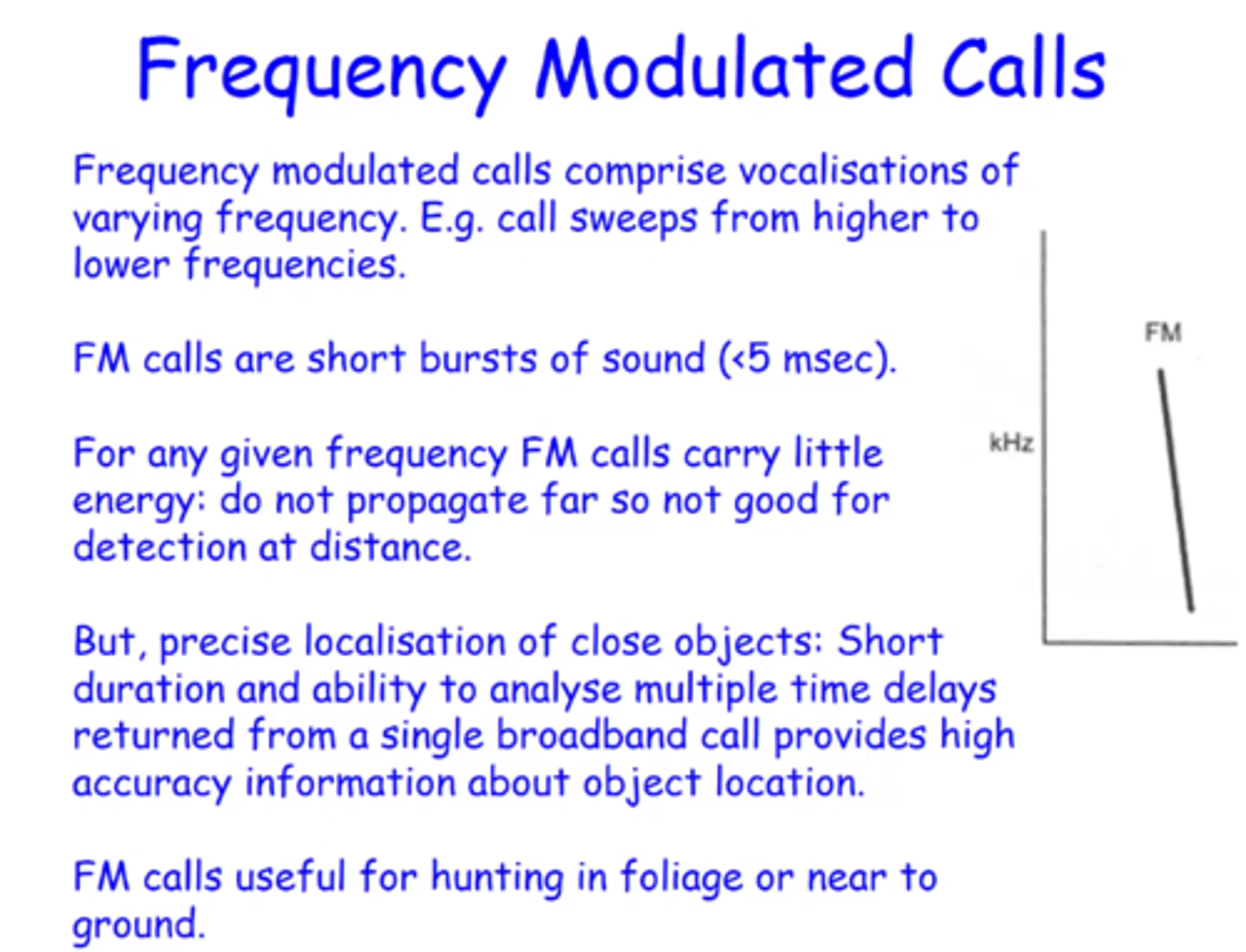
What do CF calls look like? What are they good for?
Longer duration (10-100ms) at a constant frequency bandwidth.
-contain a larger amount of energy within a small bandwidth which allows for much better signal detection against background noise
-bats contain an 'acoustic fovea' - i.e. a large proportion of their auditory cells are tuned to a small range of frequencies including their CF frequency
CF calls are useful for detection of far away objects in open spaces
Bats may also use doppler shift to determine target velocity with CF calls
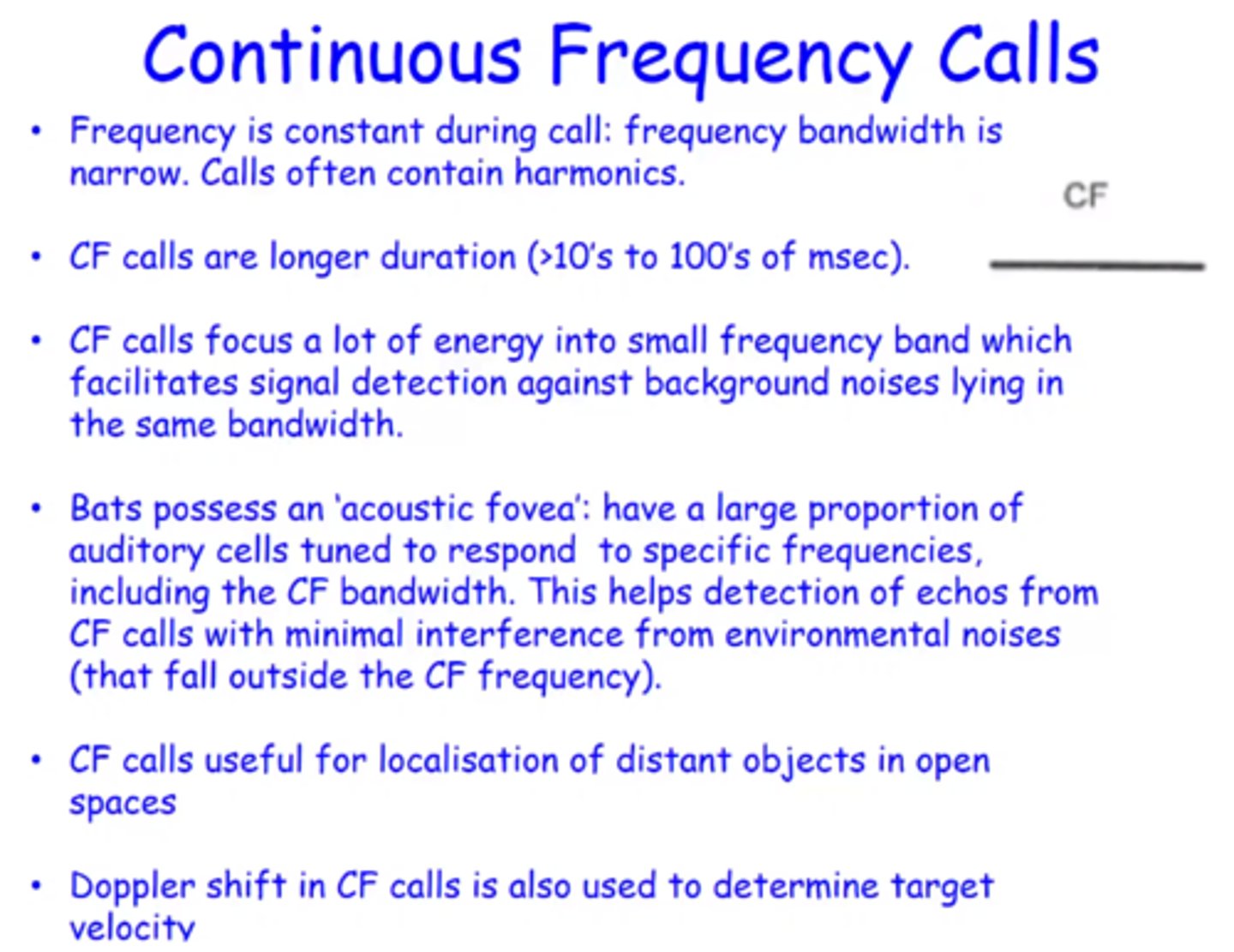
How can bats use doppler shift to determine whether a prey is going away from or is approaching the bat?
If the returned frequency is higher then emitted = prey/target is getting closer to the bat
If it is lower than emitted = it is getting further away
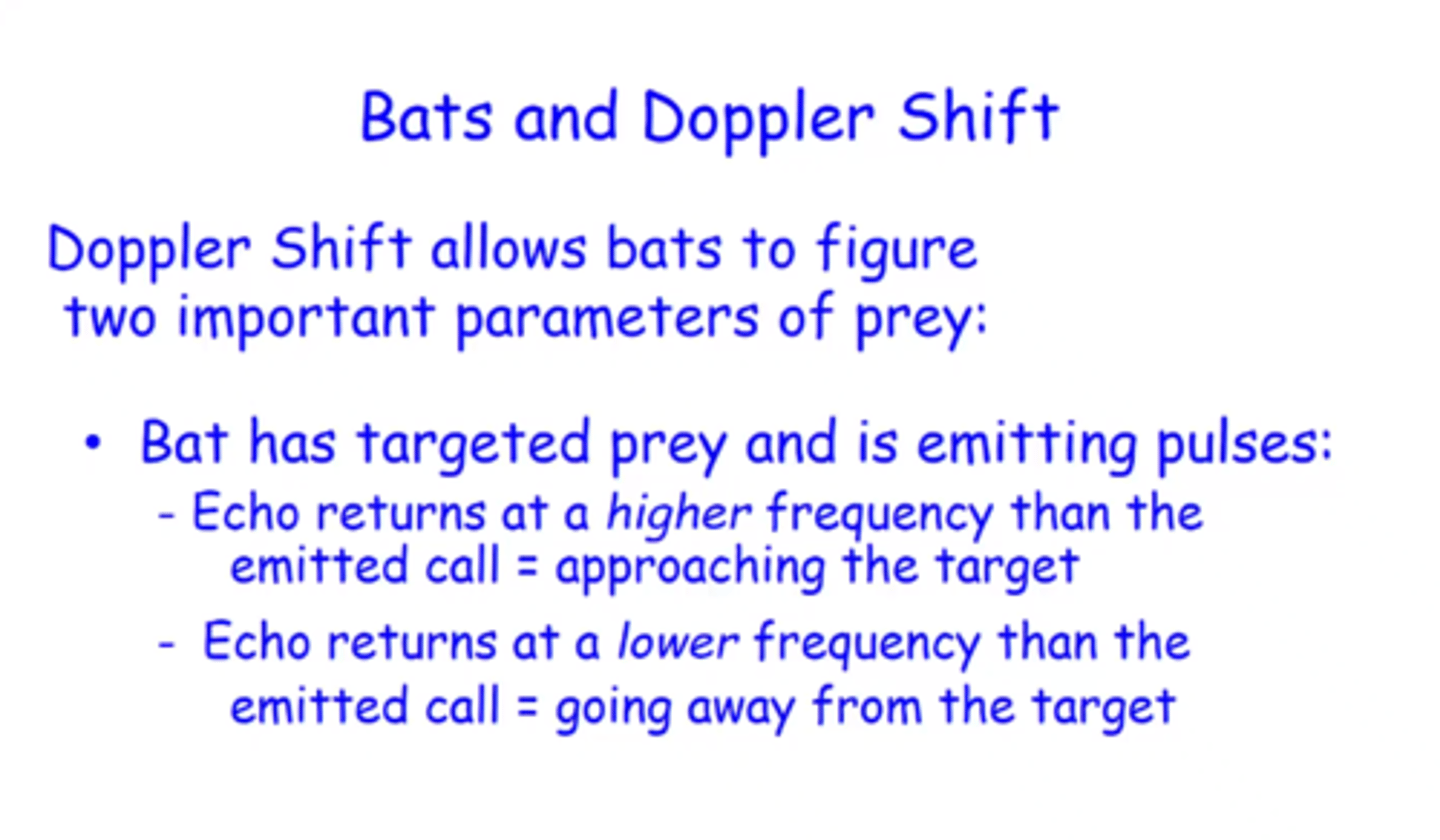
What is flutter analysis?
- a bat can use tiny doppler shifts caused by flapping of insects wings - as they move away and towards the bat to determine which species is being tracked
~see image~
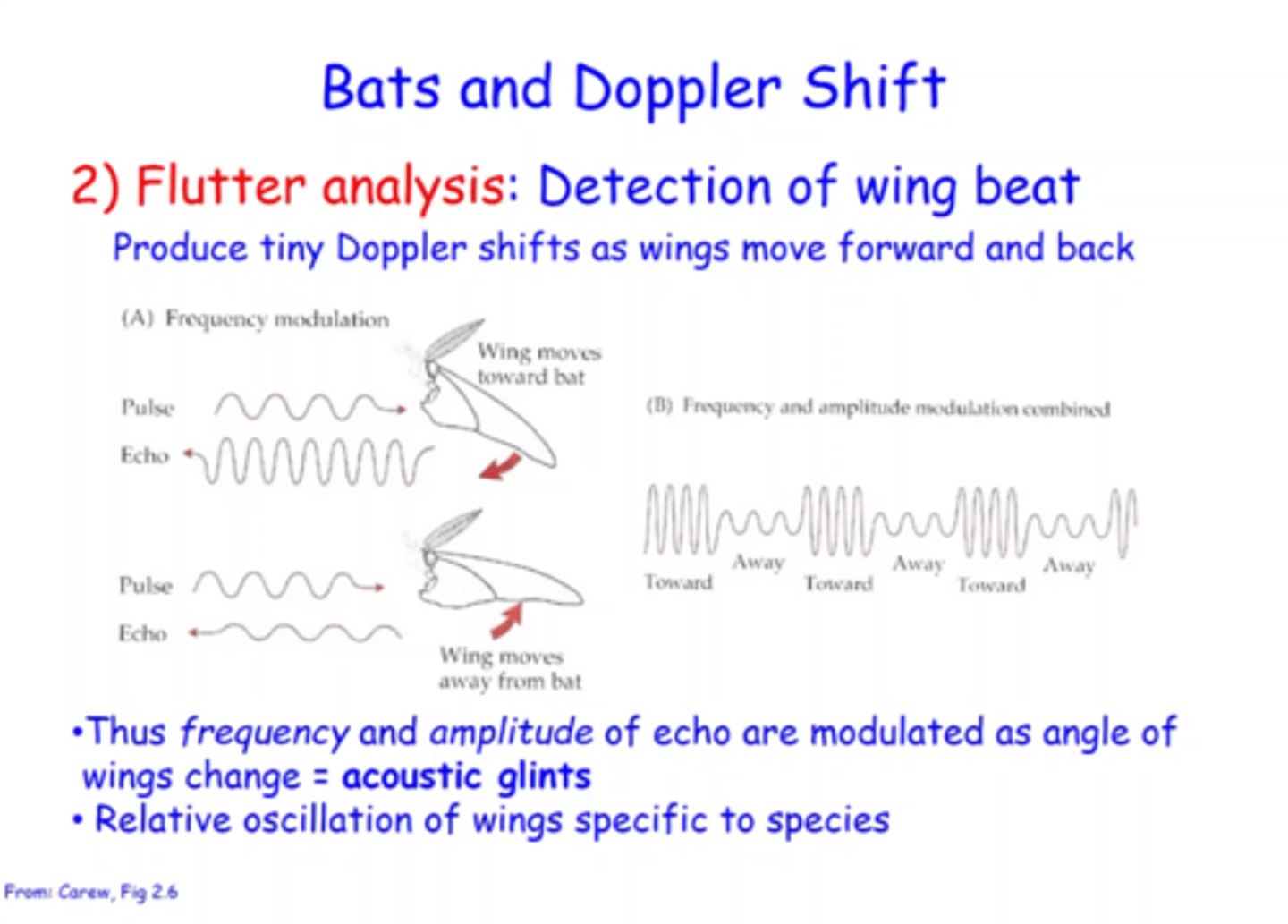
Why are CF calls used in Doppler shift analysis?
~see image~
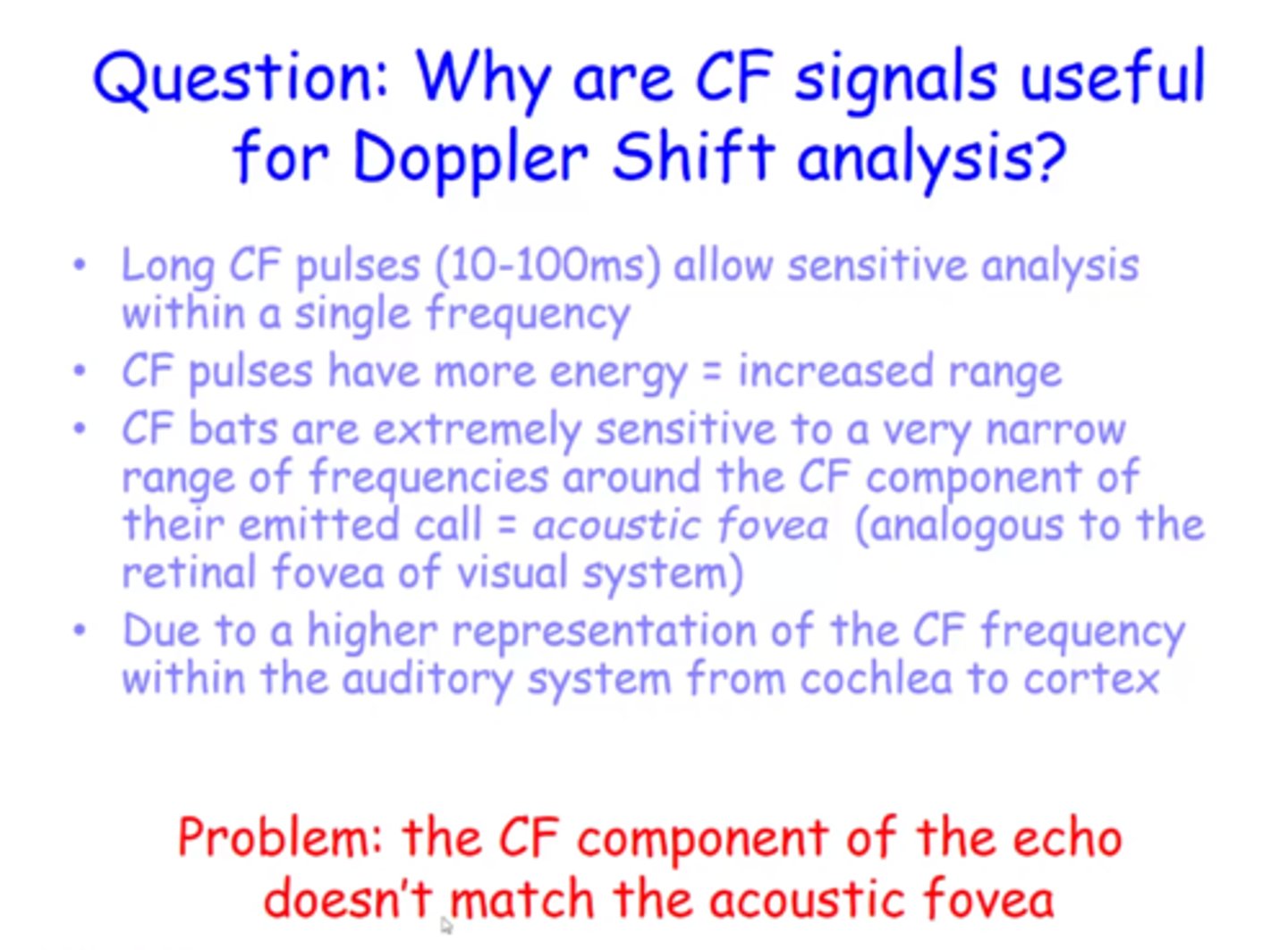
How do Bats alter their CF call so that the return echo always lies within the frequency of their acoustic fovea
They alter the initial frequency of the call to make up for the difference in return frequency.
If object is moving towards the bat, the bat will lower the initial frequency so that the return echo lands on the fovea
~see image~
Why do bats increase the frequency and decrease the duration of calls as they approach prey?
To get a more accurate localisation of prey - more necessary the close you are to striking
